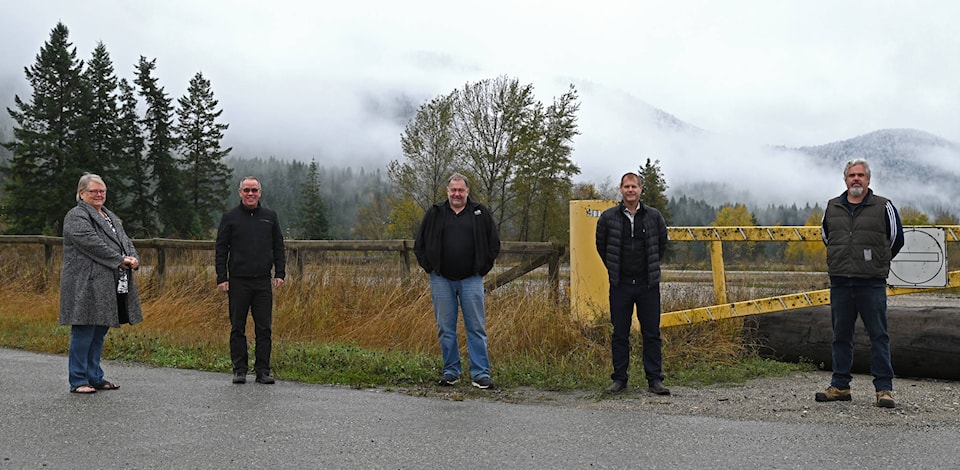The community of Vavenby’s future water treatment system has a home, thanks to a land donation from the new owners of what was the Canfor sawmill.
Brian Baarda, chief executive officer of Peak Renewables, and British Columbian entrepreneur, Brian Fehr, visited the old Canfor site Monday morning to announce the donation of a chunk of the property to the Thompson-Nicola Regional District to be used for a future water treatment system for Vavenby’s roughly 700 residents.
“Do the right thing for the people of Vavenby,” said Fehr.
The land donation puts the TNRD one step closer to getting Vavenby residents filtered water that meets Canadian standards.
Currently, the water system in the community is fed from the river and it can become turbid and the only treatment being done to the supply is chlorination, said Jake Devlin, director of environmental services with the TNRD. If there is sediment in the water, the customer will get sediment out of their taps.
He added the objective of the TNRD is to have all of the water systems that they look after meet Canadian filtration guidelines for water quality. But, just like with all things, there’s a catch — cost.
“The only way you can afford to do it is with grant assistance from higher levels of government, provincial and federal,” said Devlin. “In order for us to do that we need to really do our homework to figure out what we’re going to build, where we’re going to build it and how much it’s going to cost.
“Brian and his land donation to us for Vavenby is absolutely essential in answering those preliminary questions, allowing us to do the pre-engineering work to figure out what the project would look like.”
Once they’ve figured that out, he added, they will then be ready to apply for grant funding when the various levels of government issue a program that fits the needs of the system.
The TNRD also installed water meters to help find leaks throughout the system. Being able to repair these leaks will assist in taking some pressure off the system, bringing the demand lower, which will ultimately save money down the road when the water treatment plant is built.
As far as the rest of the formerly Canfor-owned land, Fehr said there’s nothing solid in the works yet, except for gutting and decomissioning the sawmill site, which will take the next year or so to complete. After that, it’s filled with opportunity, but should bring in industry that suits the area.
“It’s a forestry-based area, no matter what anybody tells you,” he said. “That allows us an opportunity to do something here with biofuel and biorefinery — taking waste out of the bush and turning it into something. That is what I believe has to happen here in order to supply some jobs…I believe when you hit bottom, you can recover.”
